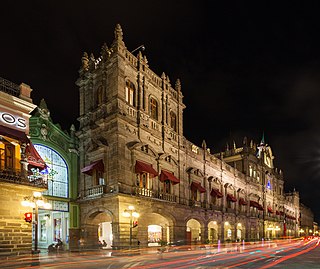Related Research Articles

Trinidad is a town in the province of Sancti Spíritus, central Cuba. Together with the nearby Valle de los Ingenios, it has been a UNESCO World Heritage Site since 1988, because of its historical importance as a center of the sugar trade in the 18th and 19th centuries. Trinidad is one of the best-preserved cities in the Caribbean from the time when the sugar trade was the main industry in the region.

A batey is a settlement around a sugar mill. They can be found in Cuba, the Dominican Republic and Puerto Rico.
A Slave Bell is a bell that was rung to regulate the day on slave plantations and in slave societies. They were featured in slave plantations throughout the Americas and notably in the slavery systems in Cape Colony, present-day South Africa. The structures they were housed in, most often tall pillars and towers, became landmarks on the plantation and could be used to surveillance the enslaved workers. In some cases, these structures have become a symbolic feature of the architectural style of that region and the architecture of plantation slavery. In South Africa, the pillars of the slave bell is a distinctive feature of the Cape Dutch architectural style.
Valle de los Ingenios, also named Valley de los Ingenios or Valley of the Sugar Mills, is a series of three interconnected valleys about 12 kilometres (7.5 mi) outside of Trinidad, Cuba. The three valleys, San Luis, Santa Rosa, and Meyer, were a centre for sugar production from the late 18th century until the late 19th century. At the peak of the industry in Cuba there were over fifty sugar cane mills in operation in the three valleys, with over 30,000 slaves working in the mills and on the sugar cane plantations that surrounded them.
Villa Mella, or San Felipe de Villa Mella, is a municipality in Santo Domingo Norte, Dominican Republic. Villa Mella is located north of the Isabela River, about 6 miles to the north of the center of Santo Domingo, and is considered an additional neighborhood of the capital. This sector is considered one of the economically stable areas in the Santo Domingo metropolitan area. It is also home to the musical organization known as the Brotherhood of the Holy Spirit of the Congos of Villa Mella, recognized in 2001 by UNESCO.
The historic Sugar Mill of Diego Caballero is located roughly 8 km from San Cristobal in San Cristobal Province, Dominican Republic. The mill was originally established by Don Diego Caballero de la Rosa, who was councilor of Hispaniola . The sugar mill at one point had a church with full clergy and approximately 60 stone houses for its population of African slaves, Indians, and Spaniards.
La Duquesa Sugar Mill, founded in 1882 by American machinist Alejandro Bass and F. Von Krosigh, is located in the Distrito Nacional of the Dominican Republic.
The ancient big house of Palavé, located roughly 22 km to the west of Santo Domingo, the capital of the Dominican Republic. Its unique architectural style and ancient age has led to its consideration to be put on the World Heritage list of sites who have "outstanding universal value" to the world.
The Nigua Sugar Mill, Boca de Nigua, is located 13 km to the west of Santo Domingo, the capital of the Dominican Republic, in Santo Domingo Province. Founded by the Marquis De Aranda, but later owned by Juan Bautista Ollarazaba, the site was once an important production facility in the regional sugar industry. It exhibits a mill and boiling room, as well as some historic Spanish colonial architecture. This site was added to the UNESCO World Heritage Tentative List on November 21, 2001 in the Cultural category.
The Sanate Sugar Mill is located near the Sanate Abajo River in the La Altagracia Province of the Dominican Republic.
Santo Domingo Ingenio is a town and municipality in Oaxaca in south-western Mexico. It is part of the Juchitán District in the west of the Istmo de Tehuantepec region.

The historic centre of Puebla was declared a World Heritage Site by UNESCO in 1987.
References
The Sugar Mill of Engombe [Ruta de Los Ingenios] - UNESCO World Heritage Centre Accessed 2009-02-26.